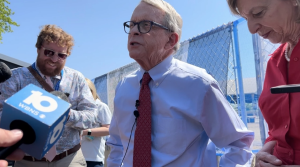COLUMBUS, Ohio (Statehouse News Bureau) — Ohio’s tax revenue has come in below projections for four out of the last five months. And while some state leaders who advocated for tax cuts in the last budget say they’re still waiting to see more data, Gov. Mike DeWine said he thinks that’s why the state is seeing a shortfall.

The state had $6 billion in surplus cash in the general revenue fund at the beginning of last year. Some of that unspent federal COVID relief money. Both Huffman and Stephens have talked up the state’s financial position. Stephens praised the “good budget” just before it passed last June, and Huffman said in an interview about the sustainability of universal school vouchers that “the state has plenty of money.”
DeWine and other state lawmakers said they are watching the revenue coming into the state. But they said they aren’t overly worried that the state will have to make major cuts because of the shortfall.
The state was facing a deficit in 2020 as COVID hit, but recovered in 2021 as the economy rebounded and federal pandemic relief funds poured in. There was a projected hole of nearly a billion dollars in the state budget in 2017, but that was resolved with budget cuts and leftover money from various state agencies, known as rotary funds.

